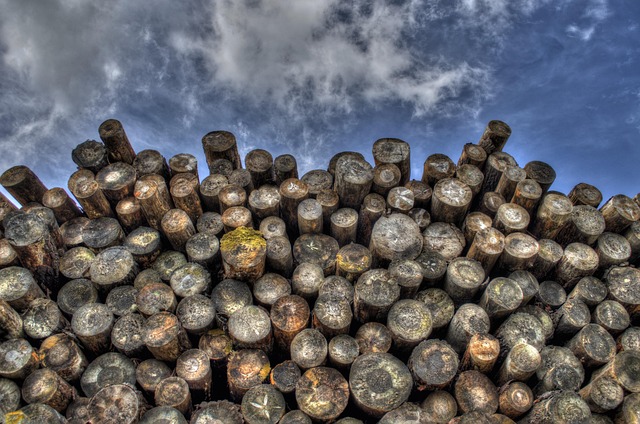Lane County, Oregon's logging history traces back to the 19th century, fueled by abundant forests and transportation advancements. The industry boomed, attracting workers and fostering local economies, but unsustainable practices led to significant forest depletion in the mid-20th century. Today, facing environmental challenges and changing perceptions, the industry shifts towards sustainability, crucial for balancing economic needs with ecological preservation in Lane County's logging history.
“Lane County, Oregon, has long been synonymous with timber, experiencing booming industries and busting cycles that have shaped its landscape and communities. This article delves into the historical overview of Lane County logging, exploring the factors fueling its prosperity, the rise and fall of logging towns, and the environmental impacts that have driven modern-day challenges. Understanding these boom-and-bust cycles offers valuable insights into the county’s unique logging history.”
- Historical Overview of Lane County Logging
- Factors Driving Timber Industry Boom
- The Rise and Fall of Logging Towns
- Environmental Impact and Modern Era Challenges
Historical Overview of Lane County Logging

Lane County, Oregon, has a rich and tumultuous history in the timber industry, dating back to the late 19th century. The region’s vast forests, primarily composed of Douglas fir, cedar, and hemlock, attracted loggers from across the country seeking to capitalize on the abundant natural resources. Initially, logging operations were small-scale, relying on ax and saw, with local families often involved in harvesting timber for construction and fuel.
As transportation networks improved, particularly with the arrival of railroads in the 1880s, Lane County logging enterprises expanded significantly. Logging became a cornerstone of the local economy, leading to the establishment of numerous mills and the influx of workers from diverse backgrounds. This period witnessed a boom in timber production, fueling the growth of nearby towns and cities. However, with intense harvesting practices, many of these forests began to show signs of depletion by the mid-20th century, setting the stage for the industry’s subsequent bust cycles.
Factors Driving Timber Industry Boom

The Lane County, Oregon timber industry has experienced remarkable booms and devastating busts throughout its history. Driven by a combination of factors, these cycles are deeply rooted in the region’s natural resources and economic landscape. Abundant forest reserves, characterized by diverse tree species and robust growth rates, have long attracted loggers and wood product manufacturers. The county’s strategic location, with easy access to coastal areas and major transportation routes, facilitated efficient logging operations and market access for finished products.
Historically, the demand for timber in Lane County soared during periods of rapid industrialization and urban expansion. The growing need for construction materials, pulp for paper production, and fuel wood fueled a vibrant logging sector. Local communities benefited from the economic boom, with increased employment opportunities and revenues contributing to infrastructure development and improved living standards. However, unsustainable harvesting practices and a lack of regulatory oversight often led to over-exploitation of timber resources, setting the stage for inevitable bust cycles as forests struggled to regenerate and market demands shifted.
The Rise and Fall of Logging Towns

In the heart of Oregon’s lush forests, Lane County played a pivotal role in shaping the state’s timber industry. The county’s logging history is a story of boom and bust cycles that have left an indelible mark on its towns and communities. Once bustling with the hustle and bustle of loggers, sawmills, and thriving economies, many small towns emerged and flourished during the peak of the industry. These logging towns became vibrant hubs, fostering a unique culture centered around the resource that sustained them—the majestic forests.
However, as the 20th century progressed, over-harvesting and changing economic landscapes led to a significant decline in the timber industry. The once-bustling mills began to shut down, and many logging towns experienced a rapid metamorphosis. Some remnants of these communities remain, whispering tales of their former glory, while others have been transformed into modern, resilient towns that navigate new paths forward, leaving behind a fascinating enigma of Lane County’s logging history.
Environmental Impact and Modern Era Challenges

The rich logging history in Lane County, Oregon, has been a cornerstone of its economy for decades, but this industry faces growing environmental challenges that threaten its sustainability. Historically, vast forests of Douglas fir, spruce, and hemlock have fueled a booming timber sector, supporting local communities and contributing significantly to the state’s economy. However, intense logging practices, particularly during the 20th century, have led to severe environmental degradation. Deforestation has resulted in habitat loss for numerous species, increased soil erosion, and altered water patterns, with cascading effects on ecosystems and biodiversity.
In the modern era, Lane County’s timber industry grapples with shifting public perceptions and stricter environmental regulations. As awareness of ecological preservation grows, loggers are pressured to adopt more sustainable practices. This includes careful forest management, selective cutting, and reforestation efforts. Balancing economic needs with environmental conservation is a delicate act, requiring innovative solutions and collaboration between industry leaders, policymakers, and conservationists. The future of Lane County’s logging history depends on embracing these challenges and ensuring the longevity of both its forests and the communities that depend on them.
